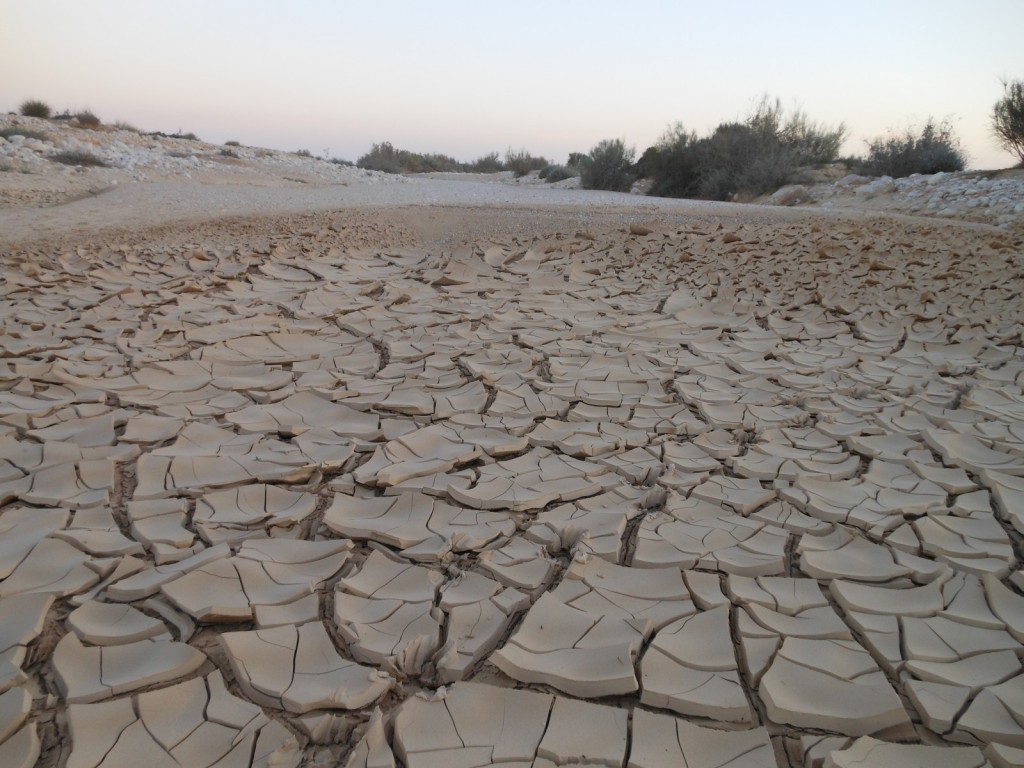The range of challenges scientists face when carrying out Earth science research in the field are vast. However, the story behind Vincent Felde’s, a PhD candidate at Giessen University, image of the wadi, is truly remarkable and highlights how geoscientific research is not limited by borders or conflict.
Wadi Nizzana (the Arabic term used to describe valleys that remain dry except during times of heavy rainfall), meanders along the Israeli Egyptian border, from the SE to the NW. It is part of the one of the largest hydrological systems in the coastal plain of the Sinai Peninsula; belonging to the NW Negev, which drains the Negev Highlands before disappearing in the Sinai dune fields. The area also comprises the Sinai-Negev dune field, covering in excess of 12,000 km2 (Tsoar et al. 2008). The landscape is split by the political border between Egypt and Israel.
The wadi is in fact not the focus of Vincent’s PhD research. His interest lies in biological soil crusts (BSCs: a complex community of blue and green algae, fungi, bacteria, lichens and bryophytes that are living in the uppermost mm to cm of the soil), which form on the sand dunes of the northwestern Negev Desert of Israel. BSCs stabilise the formerly mobile sand dunes, thereby enabling soil formation (pedogenic processes) and facilitating vascular plant establishment that combats desertification.
Vincent’s northern most research site is also located extremely close to the Gaza Strip meaning gaining access to the sites and ensuring security can be very challenging. Usually reaching the site means taking a boarder road, having asked for permission at the local army unit that secures/patrols this region first. “So it is always more or less a matter of luck, whether or not we can actually enter our experimental sites”, explains Vincent. Sometimes, an army escort is required.
On a particular trip the army had received intelligence indicating terrorist activities in the Sinai peninsula, meaning Vincent and the research team were denied access to their research sites via the boarder road, as there was a threat of Improvised Explosive Devices (IEDs) along the road. Instead, they took a route on foot, which involved carrying all their equipment, over the Sinai-Negev dune field. This also involved crossing the parched wadi Nizzana, giving Vincent the opportunity to capture it in this stunning image.
By Laura Roberts Artal and Vincent Felde
References
Tsoar et al. (2008) Formation and Geomorphology of the North-Western Negev Sand Dunes. In: Ecological Studies 200. Breckle, Yair, Veste (eds) Arid Dune Ecosystems. The Nizzana Sands in the Negev Desert.
If you pre-register for the 2015 General Assembly (Vienna, 12 – 17 April), you can take part in our annual photo competition! From 1 February up until 1 March, every participant pre-registered for the General Assembly can submit up three original photos and one moving image related to the Earth, planetary, and space sciences in competition for free registration to next year’s General Assembly! These can include fantastic field photos, a stunning shot of your favourite thin section, what you’ve captured out on holiday or under the electron microscope – if it’s geoscientific, it fits the bill. Find out more about how to take part at http://imaggeo.egu.eu/photo-contest/information/.

